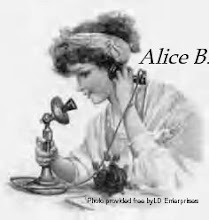| --------------------------------------------------Highly Recommended -------------------------------------------------- Build It and They Will Come and Other Myths A fancy website has zero bearing on how much money you make online. In fact, it could make you lose money! We know a better way. And it uses one of the simplest Internet tools: e-mail. It's just one of the strategies we'll be teaching at our upcoming 5 Days in July Internet Business Building Conference.
Find out more here...
"Advertising says to people, 'Here's what we've got. Here's what it will do for you. Here's how to get it." Leo Burnett Want Lots More Sales? Avoid These Seven Deadly Sins
By Drayton Bird A few years ago, after making a speech about copywriting that I thought was excellent in every way, my childish delight at my own brilliance was destroyed by a cynical listener. He said, "Well, you seem to know just about everything about what to do in order to write good sales copy. So why can't you guarantee success?" With rare modesty, I replied that I don't know everything you should do -- merely most of the things you shouldn't. So let's look not at what makes for good copy, but at why most copy stinks. Because until you banish the bad, how can you hope to succeed? I bet if you look through your ads and mailings, you will find some -- if not all -- of the following seven common sins. The first sin is being slow to get to the point. Weak beginnings kill sales. Signs of a weak beginning are being slow to mention the main benefit and incentive. (You don't offer an incentive? Shame on you. Incentives always, if they are relevant, increase sales by more than they cost.) Your incentive should be impossible to ignore. Its purpose is not merely to persuade people to reply, it is to encourage them to read. Research by Ogilvy and Mather, done 20 odd years ago, found that if you get people to read the first 250 words of your copy, 70 percent of them will read all of it. So a weak beginning loses your readers when it matters most. Copywriters seem to have minds like old auto engines, which needed to be warmed up for a few minutes. They often put in a couple of paragraphs of waffle before they get to the point. Maybe it's fear of being rejected when they do. You will often find that you can edit the first three paragraphs down to two without losing any meaning, but gaining in "attack." On a surprising number of occasions, you will also find that the best place to begin is round about paragraph three. Your job is to communicate as fast as possible what you're are talking about. Prospects don't have time to work out our clever ideas or subtle approaches. Remember, they have only one thought in their minds: "What's in it for me?" The second sin is forgetting there must be something for your prospect at every point in the message. The reader's eye may turn first to the letter, the brochure, the order form, or some other piece in the mailing. Their eyes hover over an ad before they start to read it. And they skip around e-mails and landing pages. Certain elements -- headings, illustrations, videos, and captions -- attract the most attention. So make sure your most prominent benefit and your incentives are boldly featured wherever that reader's eye might land. Don't worry about repetition. Just vary the way you make the point each time. The third sin is failing to do a complete selling job. You must give every sensible reason why your reader should respond -- and overcome every reasonable objection they may have. Years ago, when my agency had the Reader's Digest record account, I noticed that if we did not list every tune in a compilation ad, we lost sales. Everyone looked for their favorite tune. If it wasn't there, that gave them a reason not to buy -- and vice versa. Omit nothing relevant! The fourth sin is failing to prove that what you say is true. As David Ogilvy once said, "Why should anyone take the word of an anonymous copywriter?" Which is why you should always include testimonials in your marketing copy. If you don't have a testimonial file, start building one. It's easy: Just ask your customers to tell you what they think. You can ask them to rate your product/service on a scale of one to five, or from poor to excellent. By doing so, you can then say something like "78 percent of our customers rated this good or excellent." When using testimonials, it's a good idea to show photos of the people who wrote them, and even their signatures. Or show their letters in the original handwritten or typewritten form. This makes them more believable. It doesn't matter if your testimonials have spelling or grammar errors. In fact, that may make them even more convincing. The fifth sin is not showing enough people. I've lost count of the number of times I have looked at visual treatments of copy and suggested: "Why don't you put pictures of people in it?" People look at people. For example, in the ads for our client INSEAD -- the world's most expensive business school -- I included a picture of the associate dean. We found that when it was omitted, response dropped by nearly half. The sixth sin is wasting money on unnecessary elements. Every word, every picture, every piece of paper, every element of a mailing must contribute to the result. If you can't see what job something is doing, take it out. You are wasting your money and your prospects' time. Many mailings include the traditional letter, brochure, envelope, etc., where the brochure is only there because people think there should be one. Sometimes a letter without a brochure will do just as well -- or even better. One famous example: an insurance company that sent out a mailing every year that included a beautiful brochure featuring the prospect's horoscope. It was timed to arrive on the prospect's birthday. One year, they forgot to put in the brochure... and response went up by 25 percent. Another example: I changed a mailing for a loan company by taking out two brochures. The response doubled, while the cost of the mailing was reduced by 66 percent. A brochure costs money -- and the higher the cost of the mailing, the harder it is to make a profit. Some of the most successful pieces I've written -- particularly in the financial and business-to-business fields -- have contained no brochure. They were simple letters, perhaps even more persuasive because they seemed somehow less commercial. The seventh sin is a weak ending. Every element in any mailing, ad, e-mail, landing page, or commercial has to be good if you are going to get results -- but two are more important than the others: the opening (which I have already covered) and the close. You must make it easy for your prospect to respond. American Express once enjoyed a 30 percent uplift in sales in a highly competitive market, largely by making the application easier to fill in. The close should be powerful and persuasive, and should repeat all the reasons why your prospect ought to reply, including the offer. If you don't get every single person who is slightly interested to respond, it's a shame. You got them this far. NOW's the time to cash in. One important weapon, originally developed by Reader's Digest, is the yes/no technique - getting people to choose. I have never seen it fail to increase response. You get more no's than yes's, but you get more yes's than you would have gotten without it. Remember that you can have more than one call to action -- in fact, the more the better. Have one early on for people who don't need much persuasion. Then keep asking in different ways. All of the above may sound simple and obvious. But then, most of the things that make big differences in business are. And please don't think I'm being a know-it-all. I still make these silly mistakes -- but that doesn't mean you have to. [Ed. Note: Veteran copywriter and direct-marketing strategist Drayton Bird has worked with American Express, Ford, Microsoft, Visa, Procter & Gamble, and scores of other clients during his five-decade career, which included a stint as international vice-chairman and creative director with Ogilvy & Mather. In 2003, he was named by the Chartered Institute of Marketing as one of 50 living individuals who have shaped today's marketing. Ready for more marketing insights from Drayton Bird? For 101 ideas, free case studies, and articles on direct-marketing topics like the one you just read, and a 28-day free trial of Drayton's Commonsense Marketing Series, go here.] --------------------------------------------------Highly Recommended -------------------------------------------------- The First Major Shift in Business Thinking Since the 1937 Publication of Think and Grow Rich Michael Masterson's New York Times and Wall Street Journal bestseller, Ready, Fire, Aim, lays out a completely new approach to business and life. It's the blueprint that helped Michael go from pool installer to self-employed multimillionaire before his 40th birthday. And it's so practical and sensible that anyone with average intelligence can use it to make their first $1 million... $50 million... $100 million or more! Find out more here!
"I love what the team at ETR does for all of us. It's a serious advantage in life to know where the light switches are located so we don't have to spend the rest of our lives stumbling around in the dark." Jim Vaughan
Venice, FL -----------------------------------------------------Highly Recommended ---------------------------------------------------- The Relaxation Technique That Eases Stress in Seconds You're stuck in a boring meeting... a long line at the bank... or bumper-to-bumper traffic... Your blood pressure is rising. Your stress is through the roof... But with one unconventional (and often misunderstood) technique, your frustration, anxiety, and stress simply slip away. You'll feel peaceful, in control, and happy within seconds. Anytime. Anywhere.
Today's Words That Work: Anomie Anomie (a-nuh-MEE) -- from the Greek for "lawless" -- is the state of personal unrest, alienation, and uncertainty that comes from a lack of purpose or ideals. Example (as used by Julie Just in The New York Times): "Afflicted by anomie, sitting down to another dismal meal or rushing out the door to a meeting, the hapless parents of [young adult] fiction are slightly ridiculous."
We want your feedback! Let us know your thoughts on today's issue. Email us at: AskETR@ETRFeedback.com | 




No comments:
Post a Comment